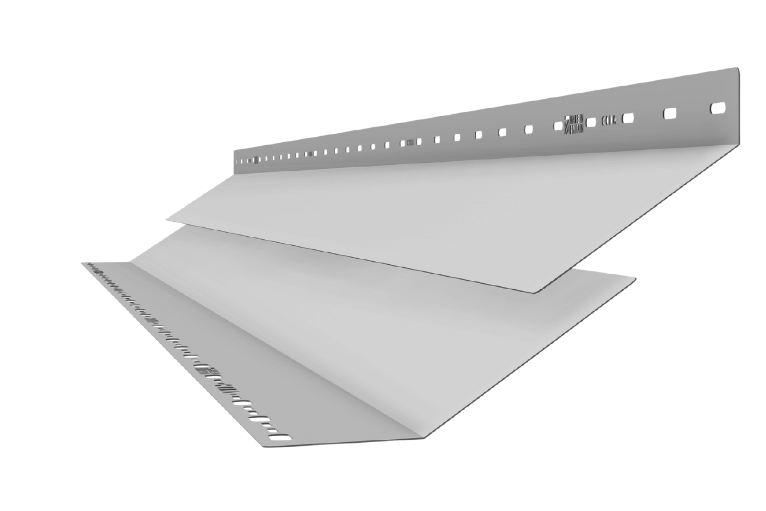 Conversion-Focused Landing Pages – More Leads, Less Bounce!
Conversion-Focused Landing Pages – More Leads, Less Bounce!
Top 10 Mistakes to Avoid in Cavity Tray Installation
Written by Arden alex » Updated on: June 17th, 2025

Introduction:
Cavity tray installation is a crucial aspect of building construction, particularly in areas prone to moisture ingress. However, even experienced builders can make mistakes that compromise the effectiveness of cavity trays. In this guide, we'll explore the top 10 mistakes to avoid in cavity tray installation, along with practical tips for ensuring a successful outcome.
Improper Tray Selection:
Selecting the wrong type or size of cavity tray can lead to water penetration issues. It's essential to choose trays specifically designed for the intended application and to ensure they are compatible with other building materials.
Incorrect Placement:
Placing cavity trays at the wrong level or angle can impede water drainage and exacerbate moisture problems. Proper placement, typically above openings such as doors and windows, is critical for effective water management.
Insufficient Coverage:
Inadequate coverage of cavity trays can leave vulnerable areas unprotected, allowing water to seep into the building envelope. Ensure that cavity trays extend beyond the opening they are meant to safeguard, providing sufficient coverage to divert water away from the structure.
Poor Sealant Application:
Improper application of sealant around cavity trays can compromise their effectiveness and lead to leaks. Take care to apply sealant according to manufacturer guidelines, ensuring a watertight seal between the tray and surrounding building materials.
Incorrect Sloping:
Failure to maintain the correct slope on cavity trays can result in water pooling and subsequent infiltration. Ensure that trays are installed with a sufficient downward slope to facilitate drainage away from the building.
Neglecting Ventilation:
Inadequate ventilation around cavity trays can contribute to moisture buildup and the risk of condensation-related issues. Incorporate proper ventilation measures, such as weep holes or air vents, to promote airflow and prevent moisture accumulation.
Overlooking Flashing Integration:
Neglecting to integrate cavity trays with flashing components can compromise the continuity of the building envelope and increase the likelihood of leaks. Ensure seamless integration between cavity trays, flashings, and other waterproofing elements to maintain a watertight seal.
Skipping Pre-Installation Inspection:
Failing to conduct a thorough pre-installation inspection can result in overlooked structural issues that affect cavity tray performance. Inspect the building substrate for damage, defects, or irregularities before installing cavity trays to address any potential issues proactively.
Using Substandard Materials:
Cutting corners by using substandard cavity tray materials can compromise the longevity and effectiveness of the waterproofing system. Invest in high-quality, durable materials that are designed to withstand exposure to moisture and environmental elements.
Lack of Professional Expertise:
Attempting cavity tray installation without the necessary skills and expertise can lead to costly mistakes and construction delays. When in doubt, enlist the services of qualified professionals with experience in cavity tray installation to ensure proper execution and optimal performance.
FAQs about Cavity Tray Installation:
What are cavity trays, and why are they important?
Cavity trays are components of the building envelope designed to prevent water ingress into the structure, particularly around openings such as doors and windows. They are essential for maintaining the integrity and longevity of the building's internal structure by diverting water away from vulnerable areas.
How can I tell if cavity trays are installed correctly?
Correctly installed cavity trays should be positioned above openings, extend beyond the opening's edges, and feature adequate slope for drainage. Additionally, they should be seamlessly integrated with other waterproofing components and properly sealed to prevent water penetration.
Are cavity trays necessary for all types of buildings?
While cavity trays are particularly crucial in areas prone to moisture ingress, such as coastal regions or areas with heavy rainfall, they can benefit any building by providing an additional layer of protection against water damage.
Can cavity tray installation be retrofitted onto existing buildings?
In some cases, cavity tray installation can be retrofitted onto existing buildings to address moisture-related issues or improve waterproofing measures. However, retrofitting cavity trays may require modifications to the building envelope and should be carried out by experienced professionals.
How often should cavity trays be inspected and maintained?
Cavity trays should be inspected regularly as part of routine building maintenance to ensure they remain in good condition and continue to perform effectively. Any signs of damage, deterioration, or defects should be addressed promptly to prevent water infiltration and potential structural damage.
In conclusion, avoiding common mistakes in cavity tray installation is essential for ensuring effective waterproofing and protecting the integrity of the building structure. By following best practices, using quality materials, and seeking professional guidance when needed, builders can mitigate the risk of moisture-related issues and create a durable and watertight building envelope.
Note: IndiBlogHub features both user-submitted and editorial content. We do not verify third-party contributions. Read our Disclaimer and Privacy Policyfor details.
Copyright © 2019-2025 IndiBlogHub.com. All rights reserved. Hosted on DigitalOcean for fast, reliable performance.

















